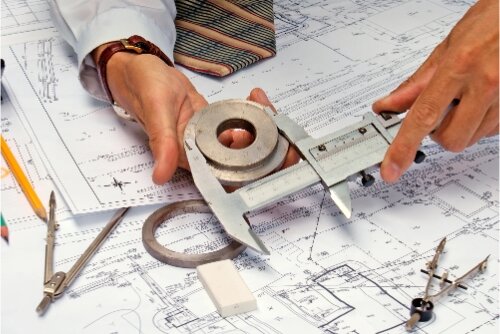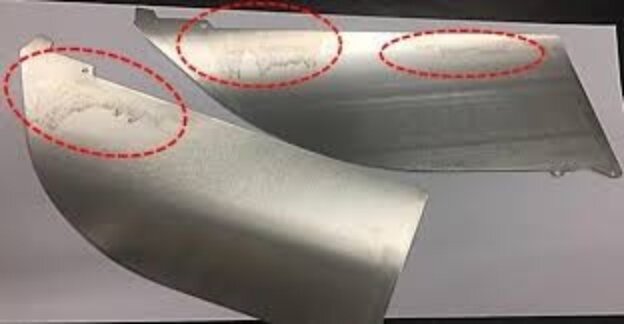Many manufacturers face challenges when creating precise grooves or channels in their products. These features are crucial for various applications, but achieving the required accuracy can be daunting. Slot milling solves this problem, providing a reliable method for creating these intricate features.
Let’s explore the world of slot milling, examining its different types and sharing some valuable tips. This knowledge will help you make informed decisions about your manufacturing processes.

Understanding Slot Milling
What is Slot Milling?
Slot milling is a precise machining technique that creates narrow channels or grooves in a workpiece. This process uses rotating cutting tools to remove material along a specific path. The resulting slots can vary in depth, width, and shape depending on the project requirements.
Importance of Slot Milling in Modern Manufacturing
Slot milling plays a crucial role in modern manufacturing for several reasons:
- Versatility: It can create features in various materials, from metals to plastics.
- Precision: Slot milling allows for tight tolerances and accurate dimensions.
- Efficiency: It’s faster than manual methods for creating slots and grooves.
- Customization: Manufacturers can easily adjust slot parameters to meet specific needs.
- Complex geometries: Slot milling enables the creation of intricate designs and features.
This technique is essential in industries like aerospace, automotive, and electronics. It helps produce components with specific functional requirements, such as heat sinks, keyways, and circuit board channels.
Types of Slot Milling Techniques
End Milling
End milling is a versatile slot-cutting method. It uses an end mill, a tool with cutting edges on its end and sides. This technique allows for the creation of slots of various depths and widths. End milling is ideal for producing blind slots, pockets, and grooves on flat surfaces.

Side Milling
Side milling employs the side of the cutting tool to create slots. This method is effective for cutting long, straight slots. It’s beneficial when working on the edges of workpieces. Side milling often provides an excellent surface finish on slot walls.
T-Slots
T-slot milling creates slots with a T-shaped cross-section. These slots are standard in machine tables and fixtures. The process typically involves two steps: cutting a straight slot and widening the bottom using a T-slot cutter. This technique requires precision to ensure the proper fit of T-nuts or bolts.

Woodruff Key Slotting
Woodruff key slots are semicircular grooves cut into shafts or other cylindrical parts. This technique uses a specialized Woodruff key cutter. The resulting slot securely holds a Woodruff key, crucial for power transmission in rotating machinery.

Gang Milling
Gang milling involves using multiple cutters mounted on the same arbor. This technique allows for cutting several slots simultaneously or creating complex profiles in a single pass. Gang milling increases productivity but requires careful setup and balancing of cutting forces.
Slot Milling Best Practices
Ramp Down Entry
Start your slot milling with a smooth entry. Use a ramp-down motion to avoid overloading the tool. Aim for a ramp angle of at least 45°. This method prevents excessive vibrations and protects both the tool and machine.
Chip Evacuation is Key
Proper chip management is crucial in slot milling. Cut slots in multiple passes to allow space for chip evacuation. Consider using cutters with chip breakers. Coolant flushing and compressed air can also help remove chips effectively.
Maintaining Spindle Load
Keep at least one cutting tooth engaged with the workpiece at all times. This ensures consistent spindle load, improving surface finish and reducing vibrations. Adjust the tool’s radial immersion to achieve this balance.
Choosing Down Milling
Opt for down milling when possible. It offers better stability and chip evacuation. Ensure your setup is sturdy enough to handle the loading pattern of down milling.
Opting for Larger Cutter Diameters
For deep slots, use larger diameter cutters when feasible. They provide better stability and strength. If slot width limits tool size, choose the largest diameter possible within the given constraints.
Balancing Feed Rates
Find the sweet spot for feed rates. Too high can cause thermal issues, while too low reduces productivity. Analyze cutting parameters carefully to determine the optimal feed rate for your specific slot milling operation.

Common Issues in Slot Milling and How to Avoid Them
Tool Breakage
Tool breakage is a frequent problem in slot milling. It often occurs due to excessive cutting forces or improper tool selection. Use the right tool for your material and slot size to prevent this. Reduce cutting depth and feed rate for more rigid materials. Always ensure proper chip evacuation to avoid tool overload.
Poor Surface Finish
A poor surface finish can result from various factors. Vibration, incorrect cutting parameters, or dull tools are common culprits. To improve surface quality, maintain sharp cutting edges and optimize your cutting speed and feed rate. Consider using a finishing pass with lighter cuts. Proper coolant application can also enhance surface finish.
Inaccurate Slot Dimensions
Achieving precise slot dimensions can be challenging. Factors like tool deflection and thermal expansion can lead to inaccuracies. To maintain dimensional accuracy:
- Use rigid tooling setups and monitor tool wear closely.
- Implement in-process measuring when possible.
- For critical dimensions, consider roughing operations followed by a precise finishing pass.
Conclusion
Slot milling is a versatile and powerful technique in modern manufacturing. You can achieve precise, high-quality results by understanding its principles, best practices, and everyday challenges. Remember to choose the right tools, optimize your cutting parameters, and consider advanced toolpath techniques for the best outcomes.
Having explored the intricacies of slot milling techniques, you now understand how to optimize your machining process. Should you require further assistance or wish to discuss slot milling options, please do not hesitate to contact Shengen for expert guidance and services.
FAQs
What is the difference between slot milling and other types of milling?
Slot milling focuses on creating channels or grooves, often with both sides of the cutter engaged. Other milling types, like face or end milling, typically work on open surfaces. Slot milling requires special attention to chip evacuation and tool stability due to its enclosed cutting environment.
How can I improve the surface finish in slot milling?
Use sharp, high-quality tools to enhance surface finish and optimize cutting speeds and feed rates. Consider a light finishing pass after roughing. Ensure proper coolant application and chip evacuation. Minimizing vibration through rigid setups and appropriate toolpath strategies significantly improves surface quality.
What are the best tools for slot milling in hard materials?
For hard materials, carbide or ceramic tools often perform best. Look for coated tools with high heat resistance and toughness. End mills with variable helix angles can reduce chatter. Consider tools with longer flute lengths or those explicitly designed for plunging operations for deep slots.
What factors should I consider when selecting a milling machine for slot milling?
When choosing a milling machine for slot milling, consider spindle power and speed range, machine rigidity, and axis travel. Ensure the machine can handle your required slot depths and lengths. Look for features like a through-spindle coolant for better chip evacuation. CNC capabilities are crucial for complex slot geometries and advanced toolpath strategies.
More Resources:
CNC machining techniques – Source: Starrapid
Advanced toolpath strategies – Source: Moldmaking
Optimizing cutting parameters – Source: Linkedin
Hey, I'm Kevin Lee

For the past 10 years, I’ve been immersed in various forms of sheet metal fabrication, sharing cool insights here from my experiences across diverse workshops.
Get in touch

Kevin Lee
I have over ten years of professional experience in sheet metal fabrication, specializing in laser cutting, bending, welding, and surface treatment techniques. As the Technical Director at Shengen, I am committed to solving complex manufacturing challenges and driving innovation and quality in each project.




